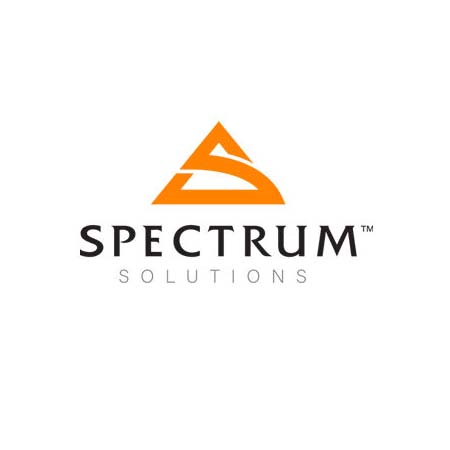
Published UCLA and Spectrum Saliva Liquid Biopsy Research Highlights Signal Amplifying Ability and Clear Detection of Cancer Biomarkers
July 28, 2022
SALT LAKE CITY, UTAH—Spectrum Solutions, LLC today announced the publishing of findings from their research collaboration with the University of California at Los Angeles (UCLA) and Dr. David Wong, UCLA School of Dentistry. The project has successfully demonstrated a superior ability to detect circulating tumor DNA (ctDNA) from saliva. Specifically, amplified EGFR mutations associated with non-small cell lung cancer (NSCLC) using Spectrum’s saliva collection and preservation system with the Electric Field–Induced Release and Measurement (EFRIM) electrostatic platform.
Most lung cancers (85 percent) fall into the category called non-small cell lung cancer (NSCLC). Though this form of lung cancer progresses more slowly than small cell lung cancer (SCLC), 40 percent of those living with NSCLC will have it spread beyond the lungs by the time it is diagnosed. Many advances in targeted treatments for lung cancer are based on the evaluation of three EGFR gene mutations. Current methods for diagnosis and monitoring include invasive tissue biopsies, which create clinical obstacles for ongoing mutation analysis and cancer treatment. The less invasive liquid biopsy options using free-floating cell-free DNA (cfDNA) or circulating tumor DNA (ctDNA) in solid tumor cancers have quickly become an important part of the screening, diagnosis, and monitoring process for cancer patients.
“The ability to detect EGFR mutations using ctDNA enables a broad range of clinical applications such as the early detection of disease, practical applications of personalized treatments, predicting treatment response, and monitoring resistance,” said Rohit Gupta, Chief Medical Officer for Spectrum Solutions. “Proving it can be done using saliva is groundbreaking.”
The ctDNA associated with NSCLC, termed ‘ultra-short’ ctDNA (usctDNA), is a third smaller in size than the average fragment. This has made it extremely hard to detect using current liquid biopsy technology, especially without additional amplification. Prior to this study, Wong’s team published on the successful detection of the same usctDNA EGFR mutations from both early and late-stage patients living with NSCLC in both blood and saliva. When paired with new technology developed at UCLA by Dr. Wong, known as EFIRM, study findings have demonstrated an impressive 14-fold amplification of detectable usctDNA from saliva collected and stabilized using Spectrum’s SDNA-1000 compared to raw or neat saliva. Additionally, after diluting the signal down to 10 percent of the original concentration, the team continued to see enhanced amplification benefits from the Spectrum device, leading scientists to believe detection of a single ctDNA fragment may now be possible.
“Achieving detectable concentrations of ctDNA in body fluids is not an easy task. The significance of successfully demonstrating this capability with saliva is the holy grail of liquid biopsy research,” said Dr. David Wong, UCLA School of Dentistry. “The discovery delivers, for the first time, a noninvasive opportunity for detection and the ongoing ‘real-time’ understanding of somatic mutation activity to direct and redirect successful treatment strategies.”
“Understanding how many face the likelihood of treatment resistance, it is actually life-changing to know the results from this research collaboration with Dr. Wong and UCLA has real power to positively impact patient outcomes,” said Steve Fanning, CEO of Spectrum Solutions. “For patients, the ability to use the self-collection of saliva empowers a new, safer, easier and pain-free era of detection and treatment innovation with real at-home remote care possibilities.”